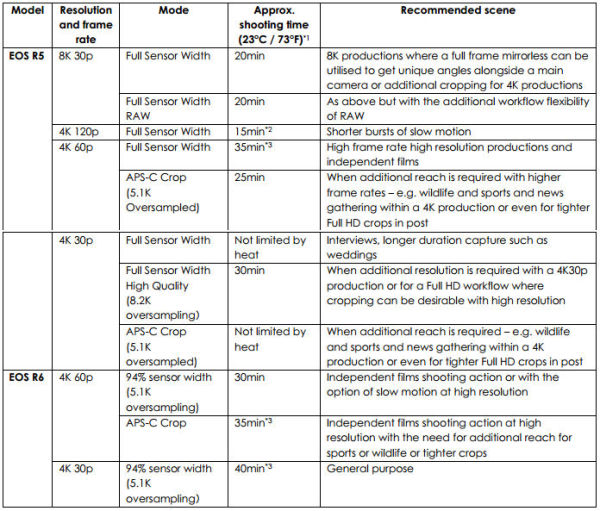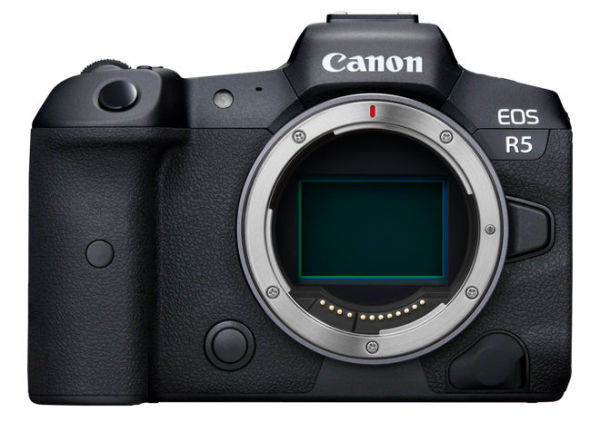The two newly introduced EOS cameras R5 and R6 have a lot to offer on paper, including 8K video recording (R5) and several 4K modes in which the entire sensor is read out and then downsampled. This is very computationally intensive, but active cooling is not implemented (for reasons of space and weatherproof design). As Canon now confirms, shooting in demanding modes is therefore only possible with limited runtime -- in 8K, for example, the R5 can be used for about 20 minutes before the camera switches off due to heat. However, the recording time also depends on the ambient temperature and whether the camera has already heated up.
Canon specifies the following recording limits for the different modes (at about 23°):

However, there seems to have been some confusion in the last line of the R6, because on the product page you can find the following information about the R6:
4K 30P
- 94% sensor width: not limited by heat
- APS-C crop (5.1K oversampled): 40 minutes
How long it is possible to film in the currently set mode should be shown in the camera display beforehand (based on the current internal temperature of the camera). If the limit has been exhausted, the camera must cool down before it can be used further. Canon also provides some clues for this:

As Canon points out in  this Q&A video, no data should be lost if the camera switches off during operation due to heat. Also, 3 minutes before overheating is reached, a warning appears on the display.
this Q&A video, no data should be lost if the camera switches off during operation due to heat. Also, 3 minutes before overheating is reached, a warning appears on the display.
If you want to use the R5 / R6 primarily for video purposes, you should be aware that in almost all recording modes a very concentrated workflow is required -- or plan sufficient waiting times. Only 4Kp30 can be recorded with the R5 indefinitely as long as the HQ mode is not active, and also with the R6 you have to be content with 4Kp30 without oversampling for longer recordings.


